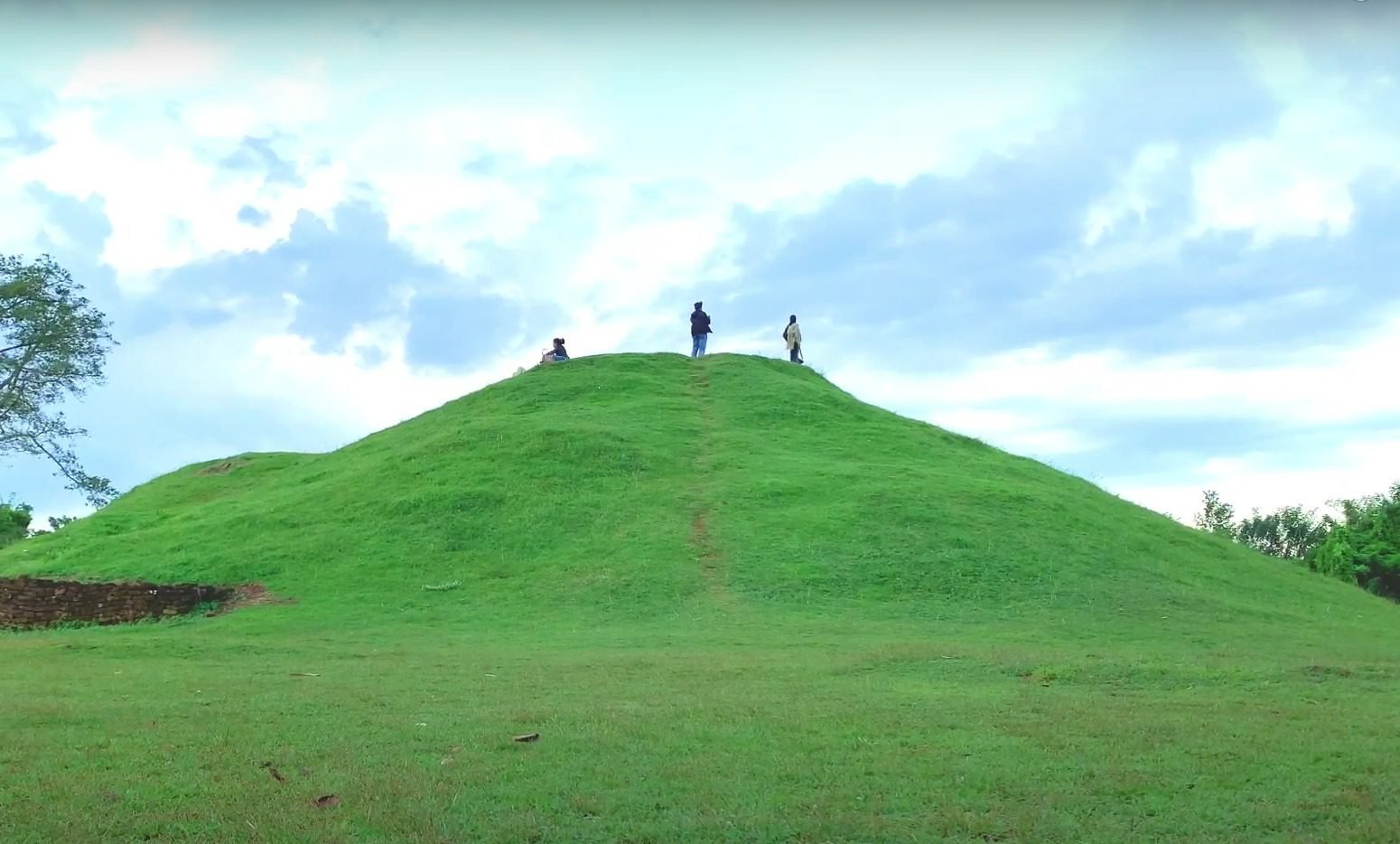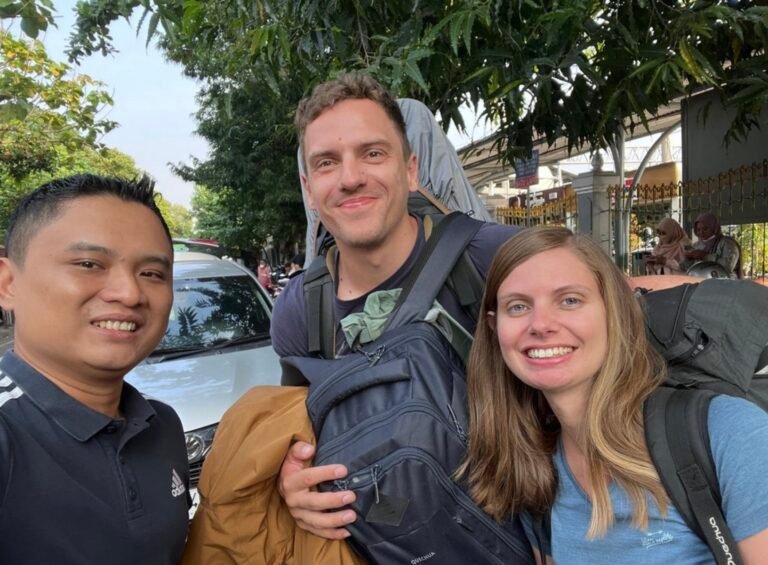This is a complete explanation of the Abang Temple history, covering the history, dance and location. Abang Temple, a stunning historical heritage, is a silent witness to the heyday of civilization in the archipelago. Hidden behind the green expanse of Blitar Regency, East Java, this temple intrigues historians and archeology fans with its charm and mystery. With its rich historical foundations and majestic architectural beauty, Candi Abang is a magnet for travelers looking for traces of its impressive past. In this article, we will explore in more depth the fascinating history and inherent attraction of Candi Abang, one of Indonesia’s cultural heritages that deserves to be appreciated.
Read More: Abang Temple History, A Ruined Temple with Full of History
The Abang Temple History
Abang Temple stands as a remarkable testament to the rich history and cultural heritage of Indonesia, particularly the Ancient Mataram Kingdom that flourished during the 9th and 10th centuries. Perched atop a verdant hill along the village road, approximately 1.5 kilometers west of Yogyakarta-Piyungan Street, this architectural marvel captivates visitors with its distinctive pyramid-like structure. The name “Abang Temple” itself derives from the Javanese term for red, “abang,” reflecting the predominant use of red bricks in its construction.
Nestled amidst the serene surroundings, Abang Temple holds a mystique that transcends time. Though now seemingly just a hill, beneath its surface lies a sacred edifice steeped in centuries-old history. During the rainy season, the hill transforms into a lush carpet of greenery, stretching endlessly into the horizon, while the dry season unveils a rugged, reddish landscape, adding to its allure.
Legend has it that Abang Temple once served as a repository for treasures during ancient times, fueling the imaginations of many and drawing treasure hunters and plunderers over the years. Unfortunately, this fascination with hidden riches has led to the desecration of this sacred site, with incidents of theft and vandalism recorded throughout history. In November 2002, the management of Abang Temple faced a significant setback when thieves targeted the site, causing irreparable damage and loss of invaluable artifacts.
Despite these challenges, efforts to preserve and protect Abang Temple continue unabated. Local authorities, archaeologists, and community members have joined forces to implement security measures and raise awareness about the importance of safeguarding this cultural gem. Through educational programs and restoration projects, they aim to ensure that future generations can not only appreciate the architectural splendor of Abang Temple but also understand its historical significance and the need to cherish and protect their cultural heritage.
As visitors wander through the ancient ruins of Abang Temple, they are transported back in time, immersed in the rich tapestry of Indonesia’s past. The temple’s weathered façade bears witness to the passage of time, each brick and stone echoing the stories of generations long gone. Amidst the tranquil beauty of its surroundings, Abang Temple stands as a symbol of resilience and perseverance, a testament to the enduring legacy of Indonesia’s glorious history.
Read More: Enjoying The Indonesian Biggest Waterpark of Jogja Bay
Attraction of Abang Temple
The main attraction of Abang Temple lies not only in the beauty of its architecture, but also in the spectacular views that offer stunning natural panoramas from the temple area to the hilltops that surround it. When looking from above, visitors will be treated to views of towering hills, covered by lush and green forests. This amazing natural beauty makes Abang Temple one of the favorite spots for tourists and the people of Yogyakarta to enjoy natural beauty, hunt for beautiful photos, hold family picnics, or even capture special moments such as pre-wedding photo sessions.
With a stunning backdrop and tranquil atmosphere, Candi Abang provides an unforgettable experience for its visitors. At sunrise or sunset, its gentle rays beautify the surrounding panorama, creating a magical and romantic atmosphere. Therefore, for those who want to capture the moment with a photo session, it is recommended to come in the morning or afternoon when the sun is not too hot, so that you can create more dramatic and stunning photos.
Apart from offering enchanting natural beauty, Abang Temple also exudes a spiritual aura and rich history. As a historical relic from the Ancient Mataram Kingdom, this temple holds many interesting stories and mysteries to explore. Visitors can feel the presence of past glories that are still strong among the majestic temple ruins. Every stone and carving on the temple walls is a silent witness to a glorious past, enriching the historical tourism experience for visitors.
Not only is Abang Temple a stunning tourist attraction, it is also a silent witness to the challenges of protecting cultural heritage. The threat of theft and vandalism that occurred in the past has become a call for local authorities and communities to unite and protect their cultural treasures. Through preservation and education efforts, it is hoped that Abang Temple can continue to inspire and educate future generations about the importance of preserving and respecting the nation’s cultural heritage.
Location Abang Temple
The best way to achieve this is to use air transportation, especially for those coming from outside the area. For example, tourists departing from the city of Jakarta can easily use flight services from Soekarno-Hatta International Airport to Adisucipto Airport in Yogyakarta. This air journey has a duration of approximately 1 hour 10 minutes. Once they arrive at their destination, it is recommended for tourists to continue their journey to Sleman Regency. The distance between Adisucipto Airport and Sleman Regency is around 9.9 km, and the fastest route that can be taken is via Jalan Padjajaran. Thus, the road trip from the airport to Sleman only takes around 16 minutes.
After reaching Sleman, the next journey leads to Jogotirto Village, Berbah District, via Jalan Imogiri Timur and Jalan Situmulyo Segoroyoso. The distance that must be traveled from Sleman to Jogotirto Village is around 21.3 km. Therefore, the estimated time required to reach this final destination is approximately 37 minutes. In this way, tourists can plan their trip well, take into account the travel time from the airport to the final destination, and choose the most efficient route to get to their destination comfortably and on time.
If you’re in search of a travel companion for your Jogja adventure, consider Yogyakarta Tour! Providing a wide range of services, Yogyakarta Tour is your perfect ally in discovering the diverse array of culture, history, and natural beauty that Jogja holds.
Read More: The History of Mendut Temple Yogyakarta






